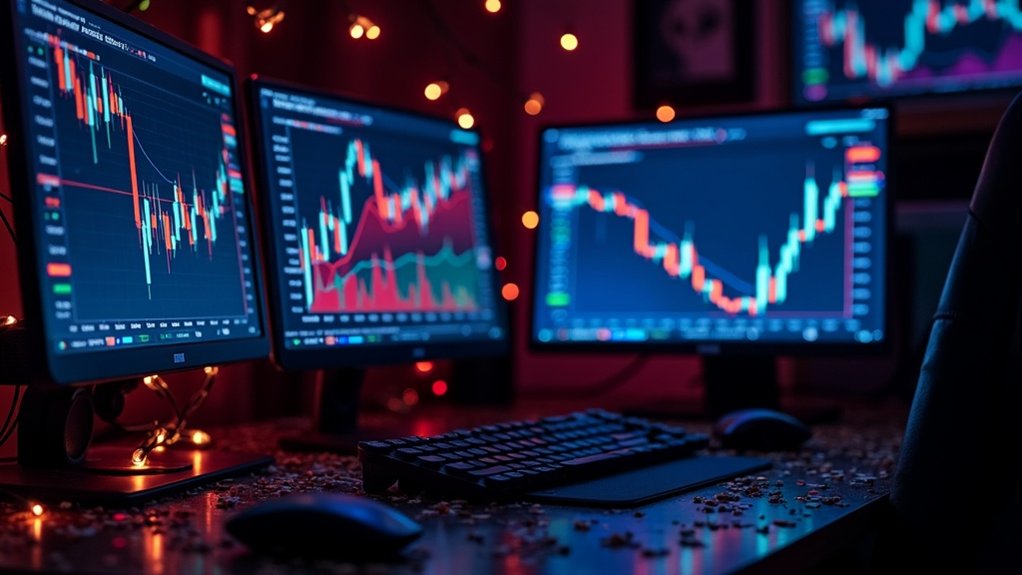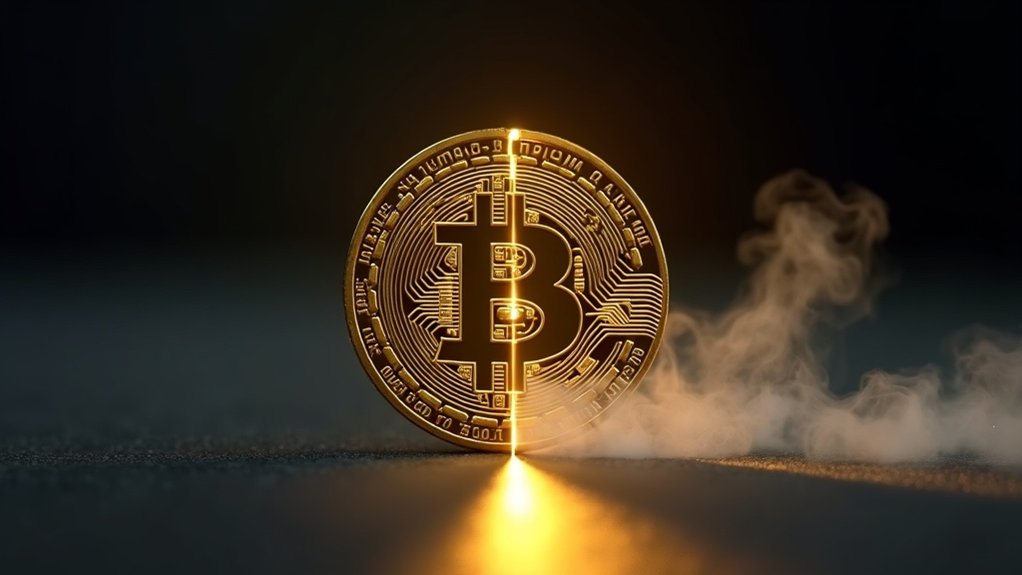FDV means Fully Diluted Valuation in crypto. It’s calculated by multiplying the current token price by the total token supply. Unlike market cap (which uses circulating supply), FDV shows what a project would be worth if all tokens were released. Investors use it to spot potential dilution risk and compare projects with different token release schedules. Not perfect though. FDV assumes price stays constant despite increasing supply—a pretty big assumption. The full story reveals why smart investors never look at FDV alone.
Confusion. That’s what many crypto investors experience when they first encounter the term FDV.
It stands for Fully Diluted Valuation, and it’s actually pretty simple.
FDV equals current token price multiplied by total token supply—all tokens that could ever exist.
FDV tells the brutal truth—what your favorite token is worth if every last coin was already unleashed upon the market.
Not just what’s floating around now. Big difference.
Unlike market capitalization, which uses circulating supply, FDV gives you the hypothetical market cap if every single token were already out there.
It’s like seeing the future. Or at least one possible version of it.
The calculation requires a clear definition of total supply, whether that’s max supply, capped supply, or whatever issuance cap the protocol has set.
Market cap calculations reflect real-time changes in both price and circulating supply, making them more dynamic than FDV.
Investors use FDV as a forward-looking tool.
It helps compare projects with different release schedules by normalizing everything to full supply.
Smart money watches the gap between market cap and FDV.
Big gap? Potential dilution pressure ahead.
Someone’s tokens are locked up, and they’re coming for you. Eventually.
The relationship is straightforward: Market cap equals current price times circulating supply.
FDV will always be greater than or equal to market cap, with equality happening only when all tokens are already circulating.
Fat chance in most projects.
Vesting schedules matter enormously here.
Team tokens, advisor allocations, investor portions—all that stuff is released gradually, increasing circulating supply and potentially diluting holders.
FDV provides a statistical representation of the maximum potential value of a cryptocurrency project, helping investors see beyond the current market situation.
Token burns push in the opposite direction, reducing supply and lowering FDV.
Economics 101.
But FDV has serious limitations.
It assumes price stays constant as supply increases.
Yeah, right.
It can be downright misleading for tokens without fixed supply caps.
Institutional investors particularly value projects with transparent token distribution models when conducting due diligence on potential investments.
And it completely ignores utility, adoption, and demand-side factors.
Bottom line: FDV offers valuable perspective for long-term investors but shouldn’t be viewed in isolation.
It’s one piece of a complex puzzle.
Not the whole picture.
Never the whole picture.
Frequently Asked Questions
How Does FDV Impact Long-Term Cryptocurrency Investment Decisions?
FDV forces investors to confront future dilution risks head-on. High FDV relative to market cap? Red flag. Those future token releases can crush prices when they hit markets.
Smart money sizes positions accordingly. Staking mechanics and burn rates matter too—they offset dilution pressure.
Tokenomics isn’t just fancy crypto jargon; it’s the difference between holding a winner or a soon-to-be-diluted loser. Diversifying across different FDV profiles? Not the worst idea ever.
Can FDV Predict Potential Market Manipulation Risks?
FDV can definitely flag manipulation risks. Huge gaps between market cap and FDV? Red alert. Means insiders might control massive future supply.
When those tokens release – boom, price crashes. Projects with sky-high FDVs and thin liquidity are manipulation magnets.
Smart money watches for concentrated ownership patterns and suspicious vesting schedules. History shows when top wallets hold over 50% of supply, price games follow.
Nothing’s guaranteed, but the patterns are there.
How Often Should Investors Recalculate FDV During Market Volatility?
Investors should recalculate FDV frequently during high volatility.
Short-term traders need almost continuous updates, while swing traders can get by with hourly checks.
Price movements exceeding 5% should trigger recalculations.
Obviously, any on-chain supply events—minting, burning, releases—demand immediate updates.
Long-term investors? Weekly checks are fine.
The real kicker: automated systems make this whole process easier.
Nobody’s manually crunching these numbers every five minutes, right?
Does FDV Differ Significantly Between Proof-Of-Work and Proof-Of-Stake Cryptocurrencies?
Yes, FDV typically differs between PoW and PoS cryptos.
PoW tokens like Bitcoin often have most of their supply already mined, creating smaller gaps between market cap and FDV. Less dilution risk there.
PoS tokens? Different story. They frequently show larger FDV-to-market-cap ratios due to substantial future issuance for staking rewards and treasury allocations.
Not just the consensus mechanism, though – tokenomics specifics matter more than the PoW/PoS label alone.
What Metrics Complement FDV for More Comprehensive Cryptocurrency Valuation?
Several metrics complement FDV for better crypto valuation.
Market cap shows current trading exposure while Volume/Market Cap ratios reveal liquidity health. TVL measures actual protocol usage—crucial for DeFi projects.
Revenue streams and active user counts provide real economic activity indicators. Staking rates affect circulating supply dynamics. Inflation schedules and vesting timelines predict dilution timing.
And treasury holdings? They signal potential sell pressure risk. FDV alone is basically useless without these contextual metrics. No single number tells the whole story.









